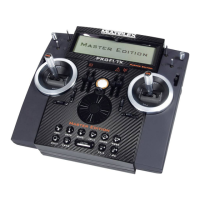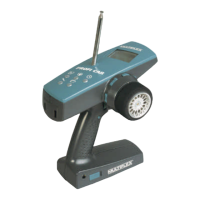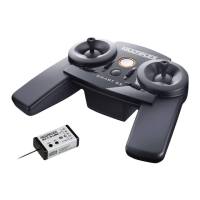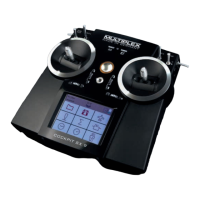UNIVERSAL Helicopter
- 5 -
„Creating“ a
UNIVERSAL helicopter
In the following example we will program a helicopter
which is fitted with three rotor head servos arranged at
90°, and is powered by an I.C. motor.
Seven steps are required:
1. Set up a new model memory
2. Assign the transmitter controls
3. Assign the servos
4. Assign the switches
5. Set up flight mode 1
6. Set up flight mode 5 (AUTO-ROTATION)
7. If wished:
8. Set up further flight modes.
But what if I don’t have 90° mechanics?
In the section starting on page 17 (rotor head sys-
tems) you will find descriptions of the most common
variants. This section tells you which mixers should be
used when assigning the servos.
If you have a different rotor head system, start by
looking there and changing the instructions in Step 3 -
assigning the servos - to suit your system.
1. Setting up a new model memory
There are two alternative methods of setting up a new
model memory:
1. You can copy an existing model
2. You can start with an empty memory for the new
model
In our example we want to create a UNIVERSAL heli-
copter starting from „scratch“, so we will use the sec-
ond option.
Starting from the operating screen this is the proce-
dure:
Button Effect and further steps
4 x Menu 1, call up Chan
e memory and
open the field (flashes)
Select „
FZ?DT
“ with the digi-adjustor
Confirm with
select „
i BYAWFEJIQ
“ as base type
using the digi-adjustor
Confirm with
You are now in the „
Z,&
“ menu. We recommend
that you enter a name for the new model right at the
outset, as this avoids any danger of confusion later.
To do this press . In the next menu open the name
field by pressing or . The first character in the
name field should now be flashing.
Use the buttons and to select the characters in
the name which you wish to change.
Use the digi-adjustor to select the desired character.
In our example we have selected „
Ni
“ as the
(shortest possible) name.
Press 3 x to end the process and return you to the
operating screen.
2. Assigning transmitter controls
Before you carry out this step you must be clear which
transmitter controls you want to control the various
functions.
For our example we have assumed the following stick
mode:
Transmitter operates:
control
A YAW AXIS
B COLLECTIVE PITCH
C ROLL AXIS
D PITCH AXIS
E IDLE UP
Starting from the operating screen the assignment
process runs as follows
Button Effect and further steps
Menu 2, call up
„Assign transmitter controls“
I+i(+#
////////////////////
V@YDE@Qi\iIiiiiiiiiS
@?FEIDFJ\iBYBJFKiii]
As we started from an empty model memory control A
is still assigned to „UNUSED“ at this point.
You now have to repeat the following steps for all the
transmitter controls you wish to use:
1. Press to open the “
V@YDE@Q
” field (flashes)
2. Select the transmitter control with
the digi-adjustor
3. Press to open the „
@?FEIDFJ
“ field (flashes)
4. Select the function with the digi-adjustor (YAW,
COLLECTIVE PITCH, ROLL, PITCH-AXIS, IDLE-
UP).
Once you have assigned all the controls press the
button once to return you to Menu 2 (Assignment),
and you can then press to move directly to the
servo assignment menu.
3. Assigning servos
Here again it is essential that you are perfectly clear in
your mind how the servos are to be connected to the
receiver.
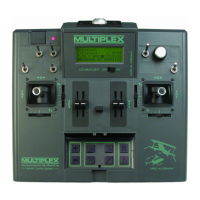
